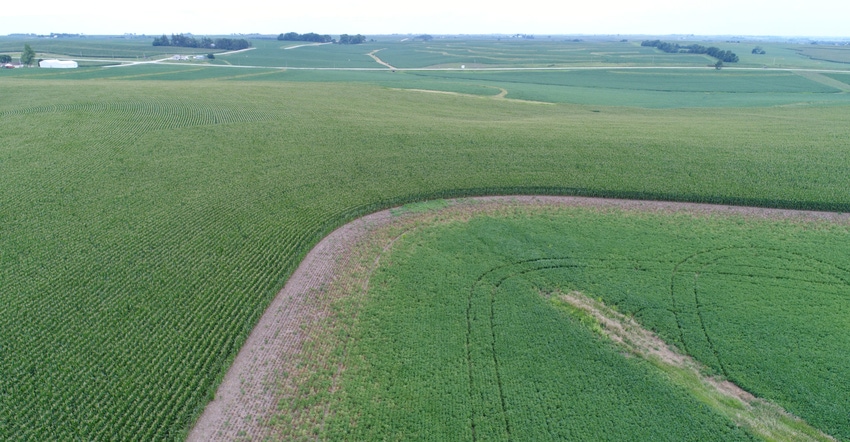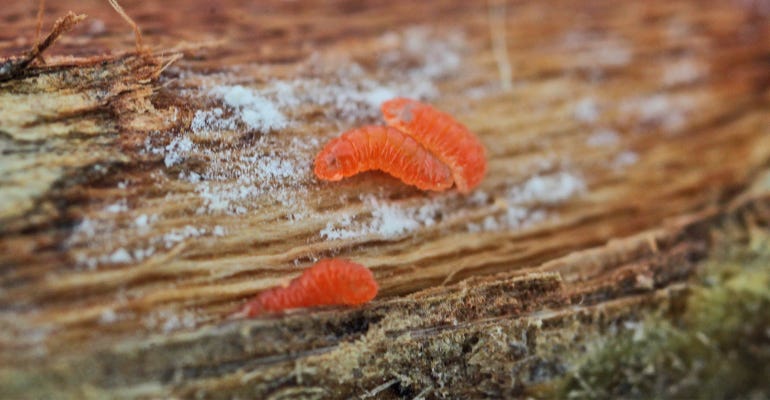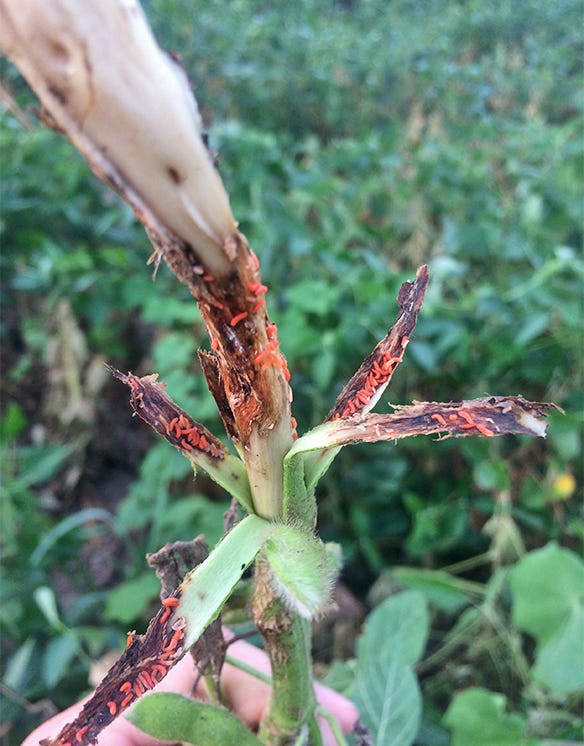
Stay alert for a new pest in soybean fields. It’s the soybean gall midge — a small fly whose larvae can take a big bite out of yields.
Last year, soybean gall midge cut yields in some South Dakota fields by 50%. In affected areas, plants can completely disappear and yields will be zero, according to Adam Varenhorst, South Dakota State University Extension entomologist.
The gall midge feeds on the stems, and the plant’s stems will break off or the plant itself will shrivel and dry up as in a drought.
No area of the state is safe from gall midge, which can move from field to field.
“We thought it was confined to the southeast counties and northwest Iowa last year, but then we found it in Edmunds County, near the North Dakota border,” Varenhorst says.
Soybean gall midge has been found in Nebraska as well.
What to look for
Damage usually first shows up on the edges of fields or along shelterbelts. Start looking in June for swelling and discoloration at the base of the stem. If soybean plants easily snap off, this could be an indicator of a gall midge larvae infestation.
 FLY LARVAE: Orange gall midge larvae under soybean epidermis.
FLY LARVAE: Orange gall midge larvae under soybean epidermis.

Look for small white, red or orange maggots under the skin of the stems near the swollen areas.
Another clue is if plants along the edge of a field start dying. The foliage will turn from a healthy green, to pale green, to yellow and finally red in a matter of a few weeks as the maggots cut off nutrients. Injury is most severe at field edges.
No control yet
Unfortunately, there’s no way to protect soybean plants from the gall midge. Insecticide seed treatments don’t seem to have an effect.
“We don’t think there is a way to slow them down,” Varenhorst says.
Nor is the gall midge population tied to any particular tillage system, planting date, variety or application of manure.
 STEM FEEDERS: Orange gall midge larvae present on woody portion of soybean stem.
STEM FEEDERS: Orange gall midge larvae present on woody portion of soybean stem.

Scientists at SDSU and several other area universities are hoping to learn more about the insect and cultural practices that may control it this year.
If you see symptoms or find the maggots this year, contact Varenhorst at 605-688-6854 or [email protected].
About the Author(s)
You May Also Like






